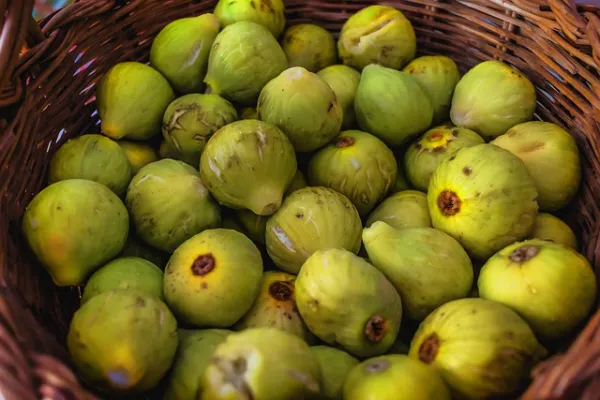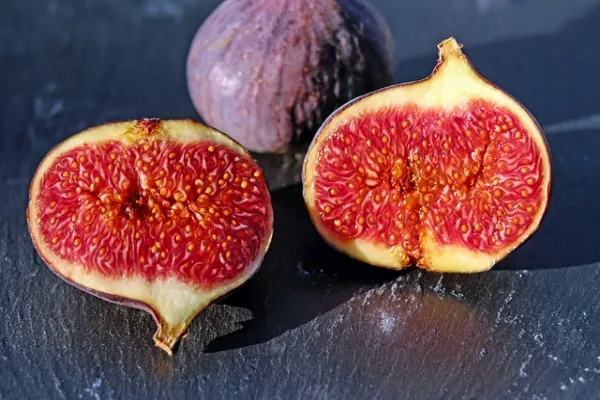
Figs, the succulent and sweet fruits that grace our tables and add a touch of indulgence to our meals, hold a captivating history and a wealth of fascinating facts. From their unique pollination process to their nutritional prowess, figs are a testament to nature’s ingenuity and a delight to behold. Embark on a journey through the world of figs, uncovering the secrets behind their popularity and the reasons why they have been revered for centuries. Here are some fun facts about figs:
A Culinary and Cultural Icon: The Figs
Figs have long been celebrated for their culinary versatility and their ability to elevate dishes with their subtle sweetness and delicate flavor. From fresh figs drizzled with honey to fig preserves gracing pastries and fig chutneys adding a tangy twist to grilled meats, figs find their way into a wide range of cuisines around the world.
In ancient Greece, figs were considered a symbol of abundance and fertility, and the fig tree was sacred to Dionysus, the god of wine and revelry. Figs were a staple food for the Romans, and they were also revered by Egyptians, who believed that the fig tree held the secret to eternal life.

A Nutritional Powerhouse
Figs are not just a culinary delight; they are also a nutritional powerhouse. They are a rich source of fiber, which helps to regulate digestion and promote gut health. They are also a good source of potassium, calcium, and iron, which are essential for maintaining strong bones, a healthy heart, and a robust immune system.
One cup of fresh figs contains about 15 grams of fiber, which is about half of the recommended daily intake. Figs are also a good source of vitamin K, which is important for blood clotting and bone health.
A Unique Pollination Process
Figs are pollinated by a tiny wasp called Blastophaga psenes, which is also known as the fig wasp. The fig wasp lays its eggs inside of a fig’s flowers, and when the eggs hatch, the larvae feed on the fig’s pollen. This pollination process is essential for the fig to produce fruit.
A Diverse Family of Fig Trees

There are over 750 species of fig trees, and they can be found in a wide range of climates, from tropical rainforests to temperate regions. Figs can be grown as trees, shrubs, or even epiphytes, which are plants that grow on other plants.
A Symbol of Fertility and Abundance
Figs have been revered for centuries as a symbol of fertility and abundance. In many cultures, figs are associated with new beginnings and prosperity. The fig tree is also a popular motif in art and literature, often representing fruitfulness and life.
A Culinary Chameleon
Figs can be enjoyed fresh, dried, or cooked. They are a versatile ingredient that can be used in a variety of dishes, from salads and desserts to main courses and sauces. Figs can be eaten plain, added to yogurt or oatmeal, or used in savory dishes like stuffing or chutney.
A Sustainable Staple

Figs are a sustainable crop that can be grown without the use of pesticides or herbicides. They are also a low-maintenance crop that is relatively resistant to disease. Figs are a valuable source of food and income for many people around the world, and they are an important part of sustainable agriculture.
4 Short Fun Facts About Figs

1. Figs are one of the oldest known fruits in the world.
Figs have been cultivated for over 11,000 years, and they are mentioned in the Bible as early as 4000 BC.
2. Figs are a good source of fiber, potassium, calcium, and iron.
A cup of fresh figs provides about 15 grams of fiber, which is about half of the recommended daily intake. Figs are also a good source of vitamin K, which is important for blood clotting and bone health.
3. Figs are pollinated by a tiny wasp.
The fig wasp is the only insect that can pollinate fig trees. The wasp lays its eggs inside of the fig, and when the eggs hatch, the larvae feed on the fig’s pollen.

4. There are over 750 species of fig trees.
Fig trees can be found in a wide range of climates, from tropical rainforests to temperate regions. They can be grown as trees, shrubs, or even epiphytes, which are plants that grow on other plants.
Conclusion: Fun Facts About Figs
Figs are more than just a delicious fruit; they are a culinary and cultural icon with a rich history. Their unique pollination process, nutritional value, and diverse family make them a fascinating subject for study. From their ancient symbolism to their modern culinary versatility, figs continue to inspire and delight people around the world. As you savor the sweet and delicate flavor of a fig, remember the fascinating journey it has taken to reach your table.
If you liked our article Fun Facts About Figs: A Delightful Journey Through Nature’s Sweetness, you might also like A Journey Through the Interesting Facts About Cherries.






Leave a Reply